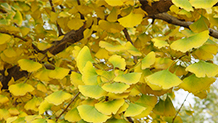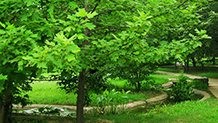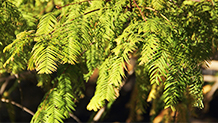| 作 者:Leng C, Wang J, Dong LM, Yi M, Luo H, Zhang L, Chen T, Xie W, Xie H, Lai M |
| 影响因子:2.4 |
| 刊物名称:Forests |
| 出版年份:2024 |
| 卷:15 期: 页码:870 |
论文摘要:
To explore the radial variation in wood properties of slash pine (Pinus elliottii Engelm.) during its growth processto achieve the early prediction of these properties, our study was carried out in three slash pine harvest-age plantations in Ganzhou, Jian,Jingdezhen, Jiangxi province of South China. Wood core samples were collected from 360 sample trees from the three plantations. SilviScan technology was utilized to acquire wood property parameters, such as tangential fiber widths (TFWs), radial fiber widths (RFWs), fiber wall thickness (FWT), fiber coarseness (FC), microfibril angle (MFA), modulus of elasticity (MOE), wood density (WD)ring width (RD). Subsequent systematic analysis focused on the phenotypicradial variation patterns of wood properties, aiming to establish a clear boundary between juvenilemature wood. Based on determining the boundary between juvenilemature wood, a regression equation was used to establish the relationship between the properties of juvenile woodthe ring ages. This relationship was then extended to the mature wood section to predict the properties of mature wood. Our results indicated significant differences in wood properties across different locations. The coefficients of variation for RDMOE were higher than other properties, suggesting a significant potential for selective breeding. Distinct radial variation patterns in wood properties from the pith to the bark were observed. The boundary between juvenilemature wood was reached at the age of 22. The prediction models developed for each wood property showed high accuracy, with determination coefficients exceeding 0.87. Additionally, the relativestandard errors between the measuredpredicted values were kept below 10.15%, indicating robust predictability. Mature wood exhibited greater strength compared to juvenile wood. The approach of using juvenile wood properties to predict those of mature wood is validated. This method provides a feasible avenue for the early prediction of wood properties in slash pine.
DOI:10.3390/f15050870










